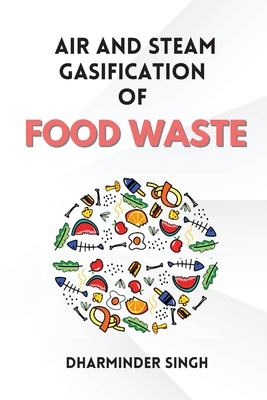
Air and Steam Gasification of Food Waste
Description
Thermochemical conversion of food waste via gasification is an attractive route for producing syngas from atypical biomass. In this research, two types of food waste were processed; food waste from agriculture fields such as groundnut shell (GNS) and mixed food waste from the kitchen. First stage of this research was focused on finding the groundnut shell (GNS) gasification performance in a fluidized bed gasifier with bubbling air as a gasification medium. GNS in powder form was gasified using naturally available river sand as bed material, top of the bed feeding, conventional charcoal as bed heating medium, and two cyclones for proper cleaning and cooling the product gas. Experiments were performed using different operating conditions such as equivalence ratio (ER) between 0.29 and 0.33, bed temperature between 650 C and 800 C, and feedstock feeding rate between 36 and 31.7 kg/h. Different parameters were evaluated to study the gasifier performance such as gas yield, cold gas efficiency, carbon conversion efficiency (CCE), and high heating value. The most suitable ER value was found to be 0.31, giving the most stable bed temperature profile at 714.4 C with 5 - 10 % fluctuation. Cold gas efficiency and CCE at optimal ER of 0.31 was found to be 71.8 % and 91 %, respectively.
In the second stage of this research, food waste from a typical Indian kitchen was used as biomass for gasification. Since, food waste has some drawbacks as biomass such as high moisture content, high heterogeneity, less mass and energy density, and high hydrophilicity, a study was conducted to evaluate the improvement in physical and chemical properties of food waste using another thermochemical treatment, called torrefaction in a fixed bed reactor. Torrefaction was carried out at different temperatures of 230 C, 260 C, and 290 C, for different residence times of 15, 30, 45, 60, 75, and 90 min in a fixed bed reactor. The solid torrefied products were analyzed by elemental analysis, proximate analysis, compositional analysis, and thermogravimetric analysis (TGA), and it was found that most suitable residence time for torrefaction was 60 min as torrefaction beyond 60 min did not yield much improvement in changing the properties of kitchen food waste. Carbon content increased from 46.0 to 58.5%, consecutively increasing its higher heating value (HHV) by 21.9%. Compositional analysis demonstrated that there was not much hemicellulose left in the raw food waste after cooking; however, it had cellulose in significant proportion which went through some decomposition during torrefaction. Lignin was not affected much. Various process parameters such as mass yield, energy yield, and energy density were also studied, and it was found the mass and energy yield decreased by 65.0% and 47.5%, respectively, and energy density increased by 35%. Van Krevelen indicated clearly that torrefied char had achieved the characteristics of low quality coal.
